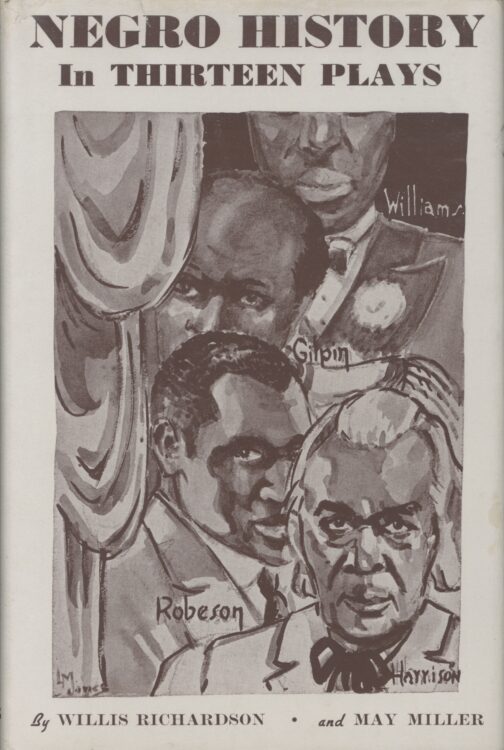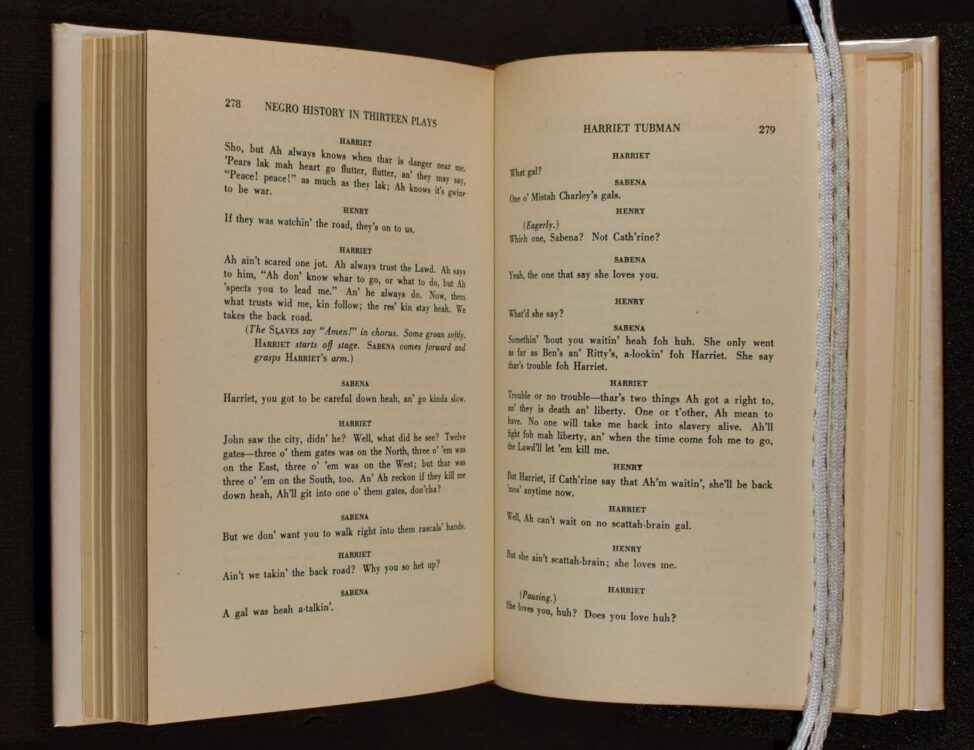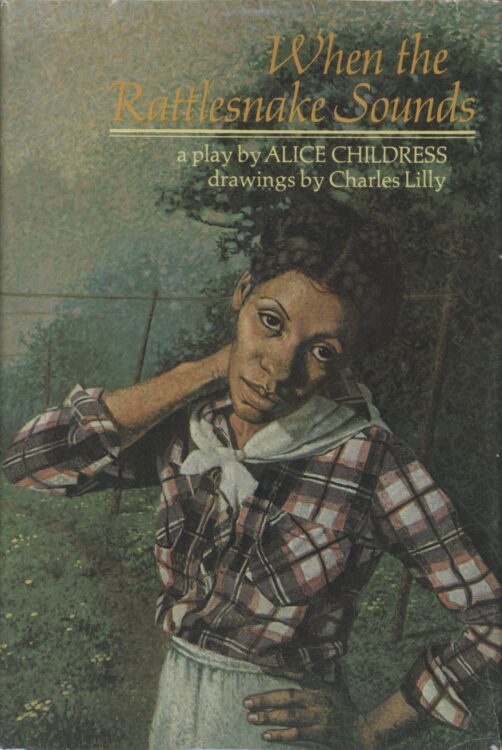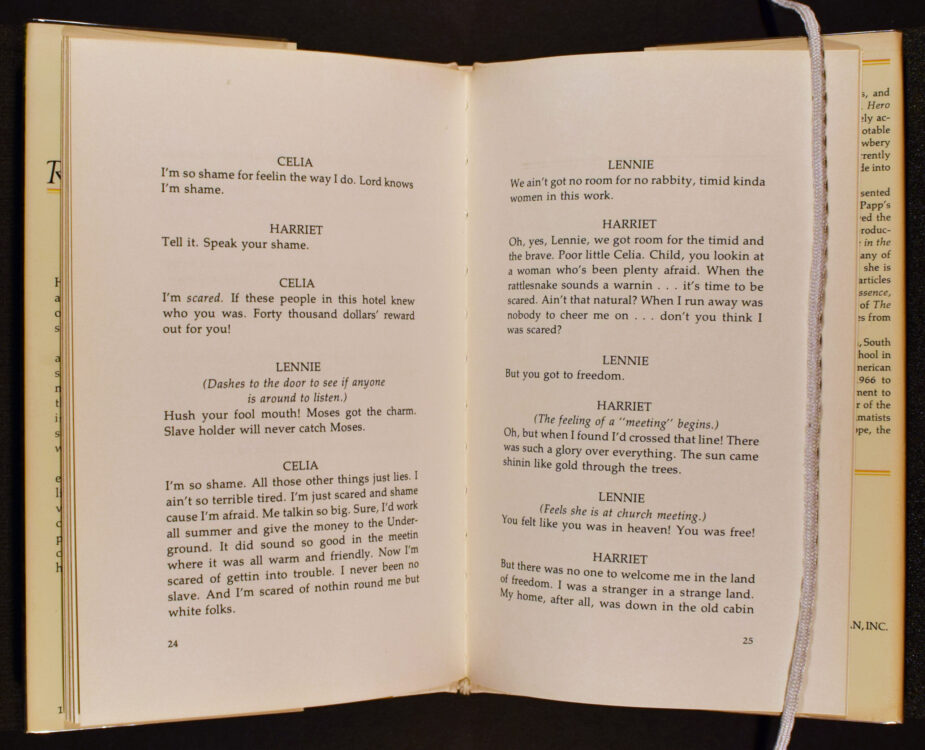Harriet Tubman
May Miller
1935
May Miller was a prominent playwright during the Harlem Renaissance. Other plays by Miller that are included in this anthology center on such figures as Samory Touré and Sojourner Truth. This one-act play follows Catherine, an enslaved woman in love with Harriet Tubman’s brother, who learns of a plot to capture Tubman along with her latest group of escapees and rushes to warn them. The version of Tubman portrayed here is confident, determined, and fearless—a larger-than-life figure. When Tubman first comes on stage, the other characters fall to their knees before her in reverence. She waves away others’ concerns about potential danger with unshakeable faith in her own abilities and her relationship with God. She values love for and dedication to one’s people above all else, and passes judgment on others accordingly. Catherine proves her worthiness to Tubman (and by extension to the rest of the group) by demonstrating both of these qualities and is rewarded by Tubman inviting her along in the journey to freedom.
When the Rattlesnake Sounds
Alice Childress
1975
Playwright and novelist Alice Childress became the first Black woman to receive an Obie Award in 1956, for her play Trouble in Mind. When the Rattlesnake Sounds was inspired by the fact that Harriet Tubman spent some summer months in the 1850s in Cape May, New Jersey, a seaside vacation town, working as a cook and laundress in order to earn the money that would fund her trips to the South. In the play, this labor is a collective effort, with Tubman doing laundry with two other women as part of their mission to raise money for the Underground Railroad. One of the women is frustrated with the work, which leads to arguments and discussion among all three of them about the significance of their task. The version of Tubman that exists in this play is a skilled leader who diffuses conflict with words of compassion and by setting a positive example. Despite the others’ idolization of her, she is careful to remind them that she is a person just as they are, recounting to the others her fear and loneliness when she first made the journey to freedom. This fear is a crucial part of the lesson she imparts on her two companions—that it is better to be afraid but still try to make a difference, than to hide where it is safe and do nothing.





